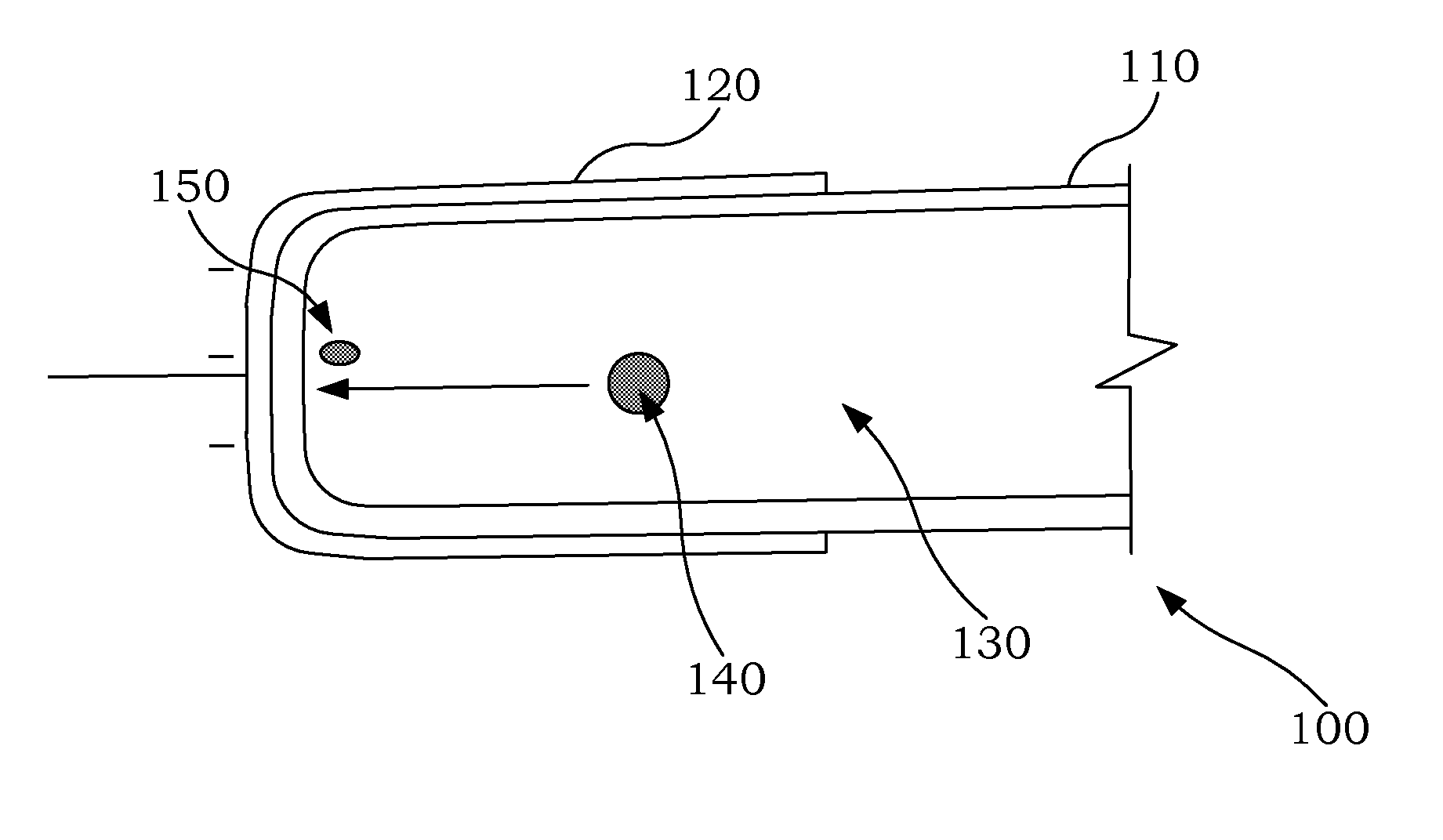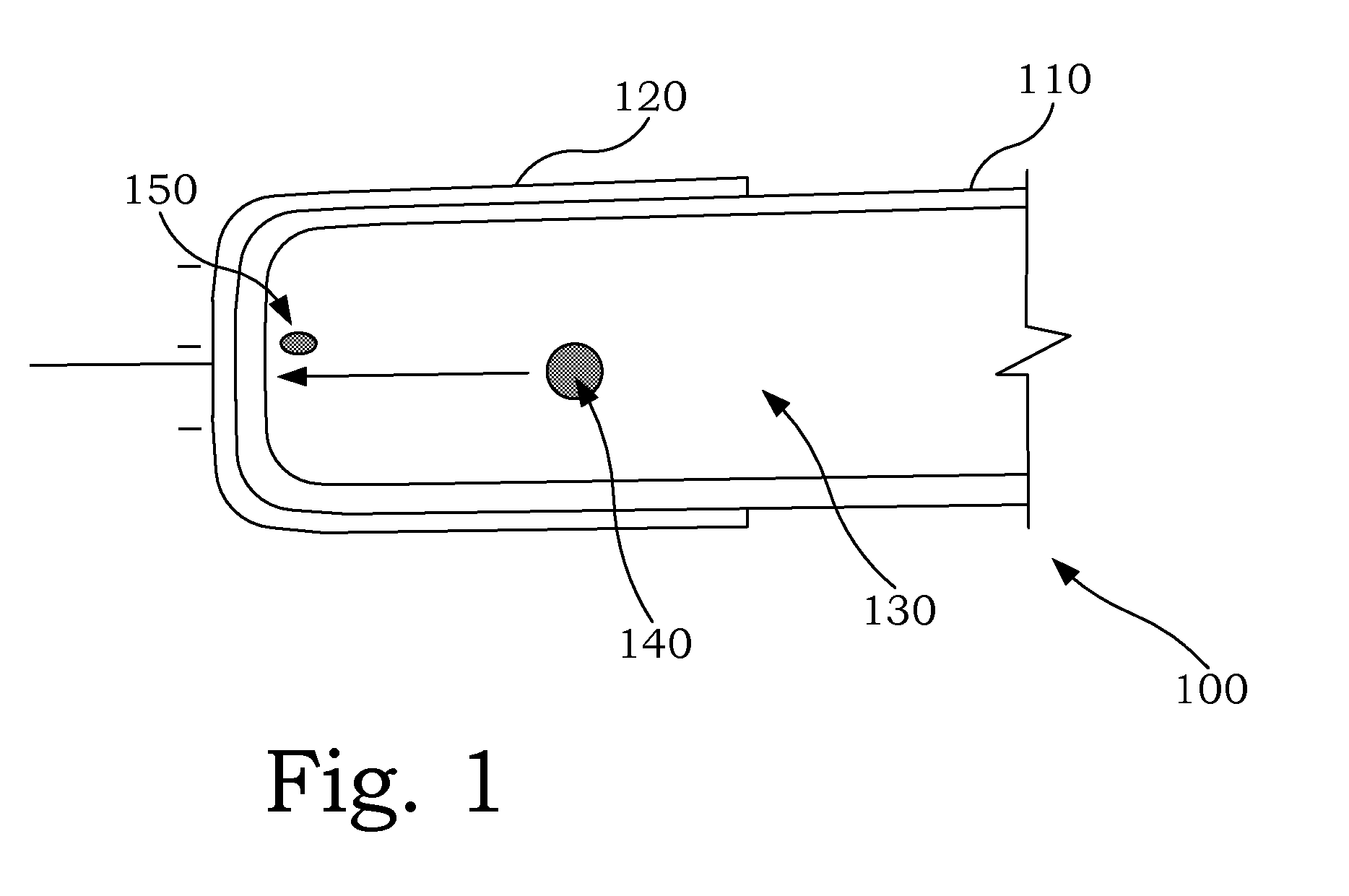External electrode fluorescent lamp with optimized operating efficiency
a fluorescent lamp and fluorescent lamp technology, applied in the direction of electrical discharge lamps, basic electric elements, electrical apparatus, etc., can solve the problems of high voltage, high firing voltage of fluorescent lamps, safety risks, etc., and achieve the effect of low emission function and high secondary electron emission ra
- Summary
- Abstract
- Description
- Claims
- Application Information
AI Technical Summary
Benefits of technology
Problems solved by technology
Method used
Image
Examples
Embodiment Construction
[0046] Referring now to FIG. 1, there is illustrated a fluorescent lamp of the present invention, especially a miniaturized fluorescent lamp 100, which is constructed from an encapsulating glass 110, a metal contact 120 which is, for example, provided in the form of an exterior metal cap, as well as a discharge gas 130 which is located inside EEFL-type fluorescent lamp 100. The gas mixture is utilized as a discharge gas 130. Consequently a capacitor is practically created in the interior of the encapsulating glass through which the electrical power is provided as alternating voltage. Encapsulating glass 110 serves not only as a dielectric in this capacitor, but its interior surface also assumes the additional function as a cathode material. An ion 140 from discharge gas 130 migrates to the interior surface of encapsulating glass 110, which functions as a cathode material, where it is neutralized. In accordance with the present invention, encapsulating glass 110 possesses at least on...
PUM
| Property | Measurement | Unit |
|---|---|---|
| Thickness | aaaaa | aaaaa |
| Thickness | aaaaa | aaaaa |
| Percent by volume | aaaaa | aaaaa |
Abstract
Description
Claims
Application Information
 Login to View More
Login to View More - R&D
- Intellectual Property
- Life Sciences
- Materials
- Tech Scout
- Unparalleled Data Quality
- Higher Quality Content
- 60% Fewer Hallucinations
Browse by: Latest US Patents, China's latest patents, Technical Efficacy Thesaurus, Application Domain, Technology Topic, Popular Technical Reports.
© 2025 PatSnap. All rights reserved.Legal|Privacy policy|Modern Slavery Act Transparency Statement|Sitemap|About US| Contact US: help@patsnap.com



